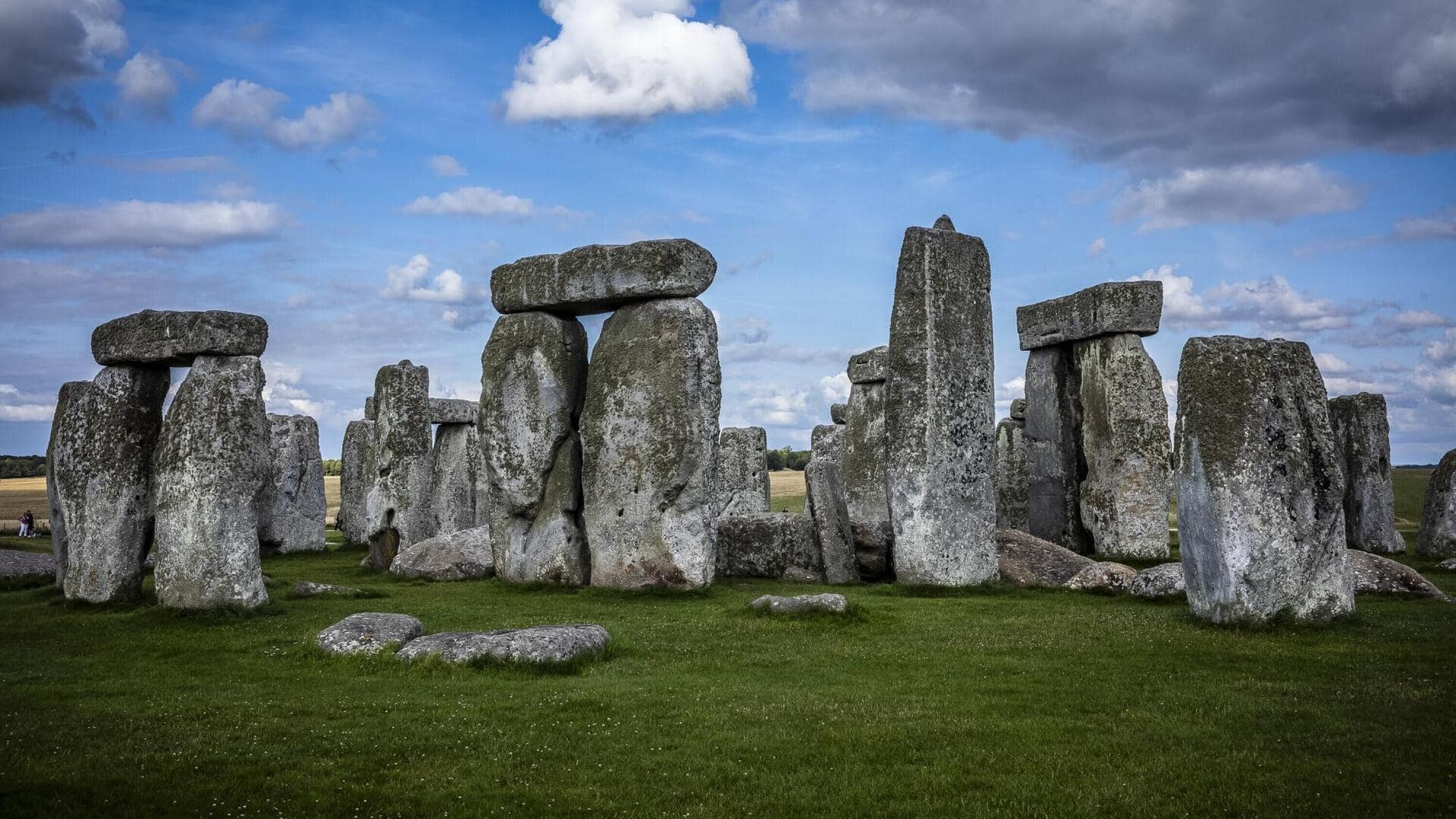
Scientists solve the mystery behind Stonehenge's strangest rock
What's the story
A groundbreaking study published in the journal Nature has revealed that the Altar Stone, the largest among the inner circle of "bluestones" at Stonehenge, originated from the north east corner of Scotland. This discovery contradicts previous beliefs that the stone was sourced from western Wales and transported approximately 200km to its current location on Salisbury Plain in Wiltshire, England. The revelation is based on a detailed analysis of the stone's chemical composition.
Mineral evidence
Chemical analysis reveals altar stone's Scottish origin
The study's co-author, Anthony Clarke from Curtin University in Australia, explained that specific mineral grains in the Altar Stone are predominantly between 1,000 to 2,000 million years old. Other minerals date back approximately 450 million years. "This provides a distinct chemical fingerprint suggesting the stone came from rocks in the Orcadian Basin, Scotland," Clarke stated. This location is at least 750km away from Stonehenge, significantly further than previously assumed.
Mystery deepens?
Questions arise about the transportation of Altar Stone
The revelation raises a multitude of questions about the transportation and purpose of the Altar Stone. Moving a six-ton block of stone such a vast distance in the Neolithic period, presents a logistical puzzle. Conventional wisdom suggests a reliance on human labor and potentially water transport to move such heavy stones. However, the exact methods remain a topic of investigation.
Monumental mystery
Construction and material sources
Stonehenge is a prehistoric monument featuring an outer circle of vertical sandstone slabs, connected on top by horizontal lintel stones. It also includes an inner ring of smaller bluestones and several free-standing trilithons. Radiocarbon dating suggests the inner ring was set in place between 2400-2200 BC, while the standing arrangement of sarsen stones wasn't erected until around 500 years later. The lack of contemporary written records about its construction has left many questions unanswered about its purpose and cultural significance.
Earlier findings
Previous studies on Stonehenge's bluestones and sarsen stones
In 2019, an investigation led by archaeologist Parker Pearson traced the source of the 42 bluestones to western Wales. Chemical analysis matched some of these stones to two specific quarries on the northern slopes of the Preseli Hills. However, most scholars since the 1500s have believed that the sarsen stones were sourced from nearby Marlborough Downs. A study in 2020 confirmed this belief, finding that 50 of these sarsens shared similar chemical fingerprints indicating a common origin.